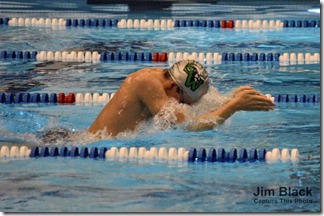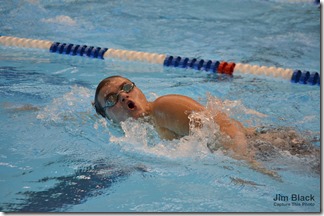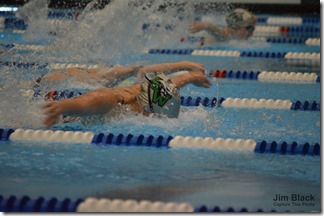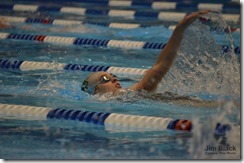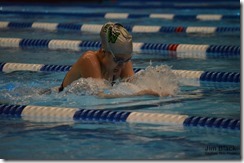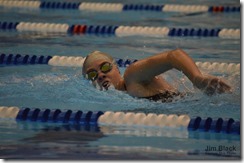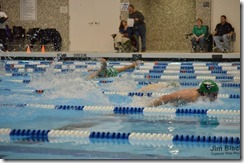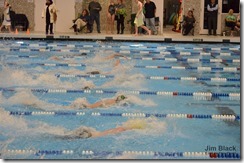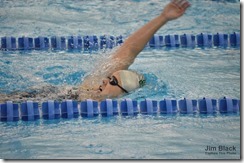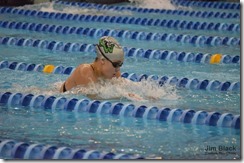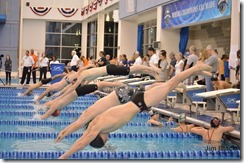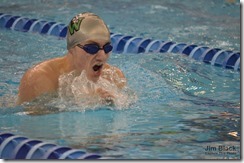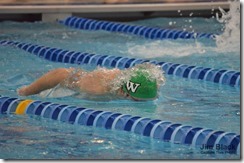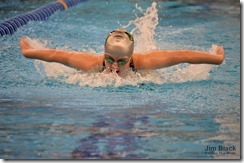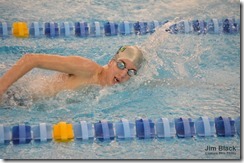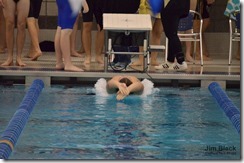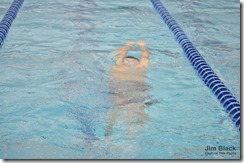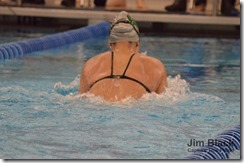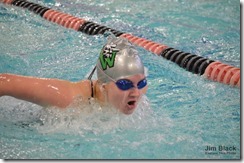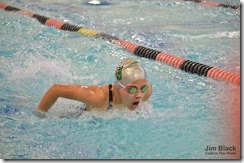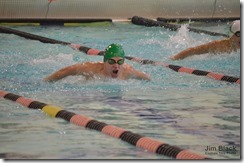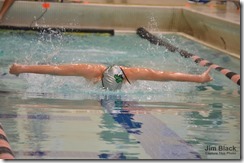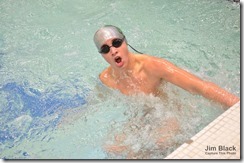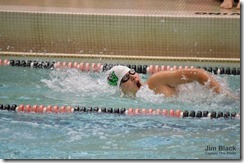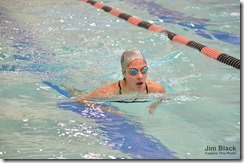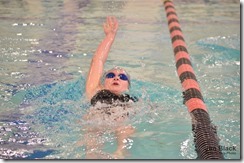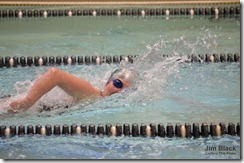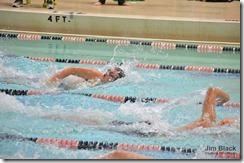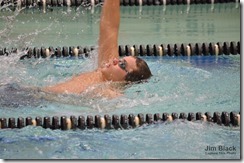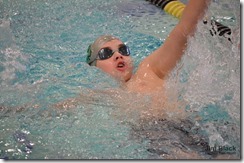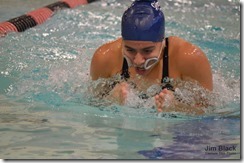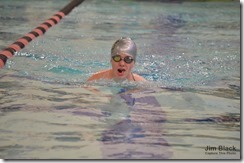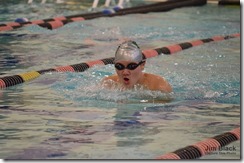I recently had the opportunity to photograph the Southwest High School Swim Team at a few swim meets. Photographing swimmers is quite challenging… well, for me it is. Often it is a dimly lit indoor pool with not a lot of space to move around to “get the shot”. There are parents watching and not interested in me getting in their view of their swimmer. There are other swimmers from the swim teams spread out and gathered into groups often cheering on their teammates. Then there is there is the risk of pool water splashed up onto your camera or lens… or worse yet, getting bumped into the pool. Now lets consider the fact once the swimmers are in the pool… most of their body (the subject) is concealed by the water.
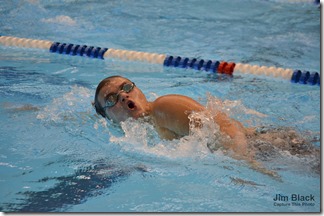 Lets revisit the fact that the area is dimly lit and it is a sporting event with fast swimmers, thus requiring a fast shutter speed to freeze the action. This is a bad combination, in order to freeze the action with a fast shutter speed, you need lots of light or a lens with a small aperture like F/2.8. Being that I am not a professional at this and have a family with 3 kids and one in college, my budget does not allow for the great zoom lens with low aperture of F/2.8. So… I am forced to use a really high ISO number (as high as 5000 some times) and the camera’s ability to digitally overexpose the image to get enough light. This works, it does the job, but you pay for it in a grainy or pixelated images that is not always bright, crisp and clear.
Lets revisit the fact that the area is dimly lit and it is a sporting event with fast swimmers, thus requiring a fast shutter speed to freeze the action. This is a bad combination, in order to freeze the action with a fast shutter speed, you need lots of light or a lens with a small aperture like F/2.8. Being that I am not a professional at this and have a family with 3 kids and one in college, my budget does not allow for the great zoom lens with low aperture of F/2.8. So… I am forced to use a really high ISO number (as high as 5000 some times) and the camera’s ability to digitally overexpose the image to get enough light. This works, it does the job, but you pay for it in a grainy or pixelated images that is not always bright, crisp and clear.
But some of the fun or challenge is capturing something more then a hand or arm out of the water. Some swim strokes are easier or better to photograph then others, like Butterfly or Breast stroke. Good timing is needed to capture the image without the arm blocking the view of the face, or the splash of water in the way. Then there is the post shoot processing, adjust the light, saturation, crop the image, etc. Enough of me rambling, here are some highlights from this year, click on an image to see it larger.
